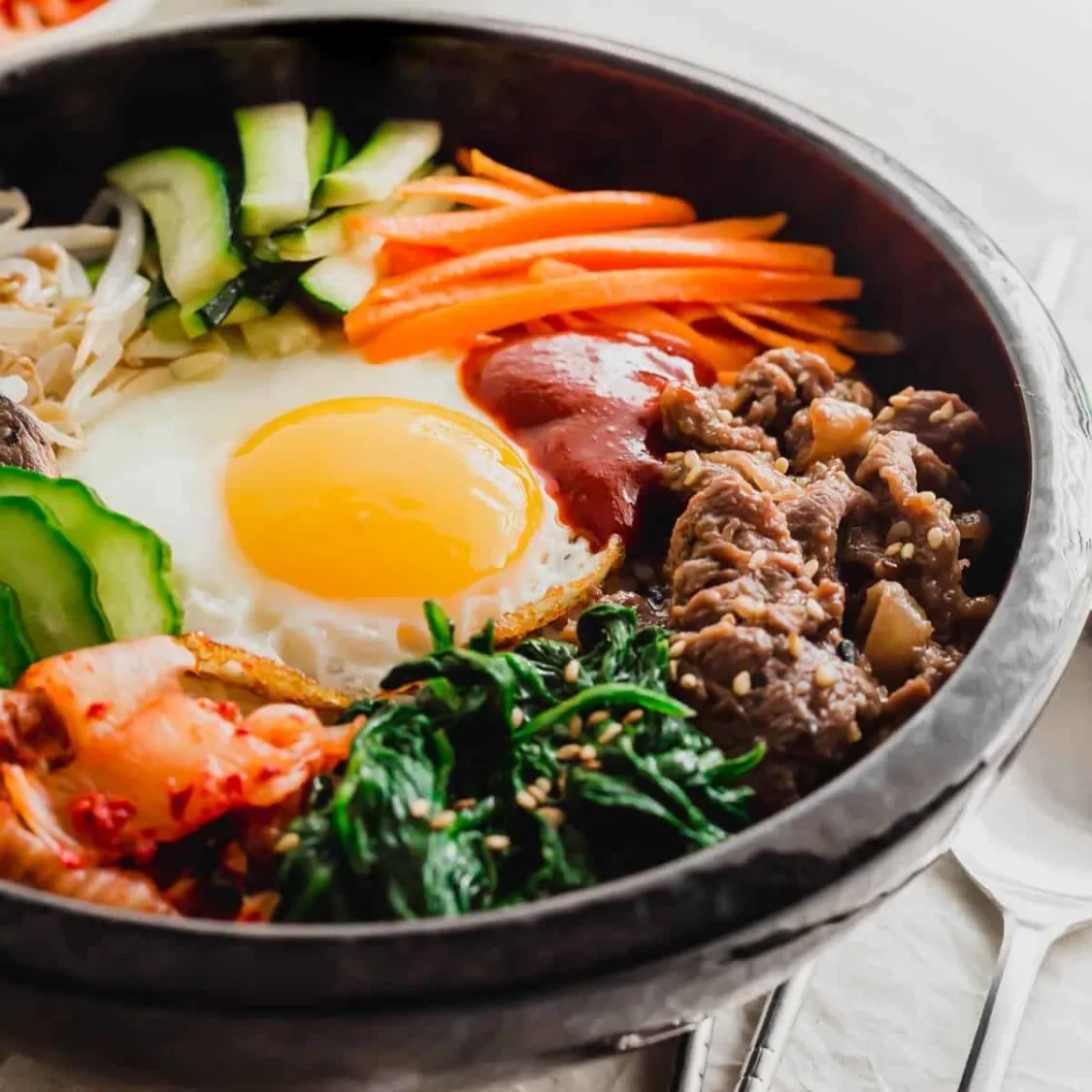
Bibimbap
Mixed rice bowl with vegetables, meat, egg and gochujang sauce.
Ingredients
- •Rice
- •Vegetables
- •Beef
- •Egg
- •Gochujang
Instructions
Prepare Ingredients
Cook rice and prepare toppings
Assemble
Layer ingredients in bowl and mix before eating
Bibimbap is a vibrant and flavorful Korean dish that translates to "mixed rice." It is a delightful bowl of warm white rice topped with an assortment of sautéed vegetables, marinated meat (usually beef), a fried egg, and a dollop of spicy gochujang (Korean chili paste). The ingredients are mixed together just before eating, creating a harmonious blend of flavors and textures.
The origins of bibimbap are somewhat unclear, but it is believed to have been a royal court dish during the Joseon Dynasty. Over time, it became a popular meal among commoners due to its simplicity and versatility. Today, bibimbap is enjoyed by people of all ages and is a staple in Korean cuisine.
To make bibimbap, start by cooking the rice until it is fluffy and tender. While the rice is cooking, prepare the toppings. Sauté a variety of vegetables such as spinach, carrots, zucchini, and mushrooms until they are tender. Marinate thin slices of beef in a mixture of soy sauce, garlic, sugar, and sesame oil, then cook until caramelized. Fry an egg sunny-side up, keeping the yolk runny for added richness. Assemble the dish by placing the rice in a bowl, arranging the vegetables and meat on top, and adding the fried egg. Finish with a generous spoonful of gochujang and a sprinkle of sesame seeds.
There are many ways to customize bibimbap to suit your taste. You can use different types of protein such as chicken, tofu, or seafood. For a vegetarian version, simply omit the meat and add more vegetables or tofu. You can also adjust the level of spiciness by adding more or less gochujang.
In Korea, bibimbap is often served in a hot stone bowl called dolsot, which creates a crispy layer of rice at the bottom. It is typically accompanied by a variety of banchan (side dishes) such as kimchi, pickled radishes, and seaweed salad. The dish is best enjoyed hot, with all the ingredients mixed together to create a delicious and satisfying meal.
While bibimbap is a nutritious and balanced dish, it is important to be mindful of portion sizes and the amount of gochujang used, as it can be high in sodium. The dish is rich in vitamins and minerals from the vegetables, protein from the meat and egg, and carbohydrates from the rice, making it a wholesome and satisfying meal when enjoyed in moderation.
